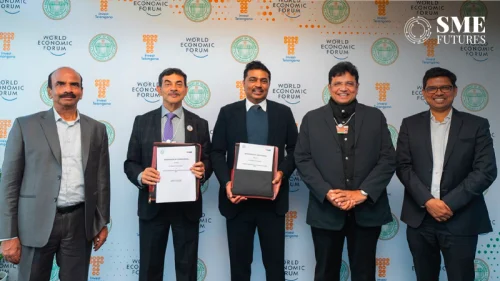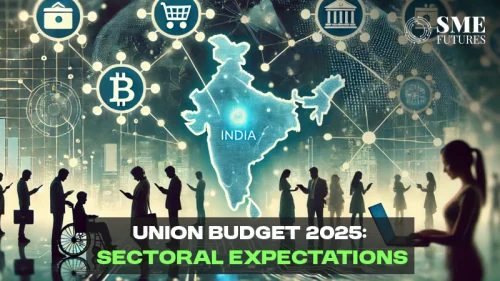The Budget 2023 is certainly a growth-oriented Budget and one that has something for everyone. The Government’s vision for India is very clear through this Budget and has been highlighted through the 7 interlinked focus areas.
The Budget touched upon critical areas such as i) encouraging public earnings, savings as well as spending, ii) development of the agriculture sector to boost farmer incomes, iii) encouraging manufacturing thereby addressing employment-related challenges, iv) adoption of green energy to meet environmental and sustainability goals v) adoption of technology to harness skill and capacity development, vi) continued impetus on digital financial infrastructure, vii) bolstering manufacturing by equipping allied businesses, viii) support businesses by easing compliance, governance, and regulatory procedures.
Below are some key observations made:
Taxation: The Budget touched the right sentiments of the citizens by introducing a slew of reforms with regard to taxes. The announcements introduced suggest that the maximum relief and benefits will be to the middle class and lower taxpayers. A positive impact will be felt by impact salaried and self-employed citizens, senior citizens, and pensioners. For the higher tax bracket payer, the super surcharge that has been reduced to 35% will be a welcome move. While certain businesses and individuals may still consider following the older tax regime, with the various measures introduced, we can expect the new tax regime to be adopted as the default tax regime. The savings that are encouraged will also increase spending which in turn will propel growth thus being a win-win situation for all.
Agriculture: Agriculture held the pulse of this year’s Budget. With the agriculture credit target of ₹20 lakh crore, and focus on areas such as animal husbandry, horticulture, dairy, fisheries, crop planning, and storage – we can expect to see a lot of development within these micro sectors. It is important to highlight the need for convergence of technology and farming here. With the Agricultural Accelerator Fund (AAF) being set up, businesses and innovations that support farming and agriculture will certainly see not only a lot of growth but also considerable Government support towards skill development, credit, funds, and market access.
Green Energy: Budget 2023 may accelerate India’s decarbonization journey. With the outlay of 35,000 crores, along with additional investments towards the Green Hydrogen Mission, it is clear that the Government aims to make India energy-independent. With a focus on energy focus, green energy, and carbon credit, the sector offers excellent growth opportunities to businesses, start-ups, researchers, and investors to boost the domestic manufacturing of green and sustainable solutions.
Infrastructure: The hike in capital expenditure by 33% for infrastructure development is a positive step toward infrastructure development. With the aim of developing railways, roads, urban infrastructure, and power, the sector will invite participation from domestic as well as global investors. Further, we can expect development in transport infrastructure projects for connectivity for ports, coal, and steel and thus we can see a flurry of activities within the sector and also allied businesses. The development of fifty additional airports, heliports, and advanced landing will also help bridge connectivity gaps which will help unit remote locations of the country. Lastly, with the setting up of the Urban Infrastructure Development Fund (UIDF), we can expect faster development of megacities and Tier 2 and Tier 3 cities in the future thus opening up business possibilities for infrastructure companies.
Fintech and digital transformation: The Government touched upon the power of fintech and digital currencies, as ways to alter the banking and financial sector with a specific focus on financial lending. Fintech when combined with emerging tech solutions such as AI, robotics, etc. can bring about a plethora of opportunities. However, much clarity is needed on data security, protection, and privacy-related aspects. Additionally, apart from an understanding of regulations, governance, and compliance, significant capital and skill investments are also necessary. The Government acknowledges this and has made efforts to address the challenges by setting up educational institutions, announcing Centers of Excellence for Artificial Intelligence, and nurturing R&D. We can expect more innovative businesses and start-ups mushrooming over the years that leverage technology to address the larger developmental goals of the country. However, clarity of laws and regulations would help the further deployment of fintech solutions and digital transformation development.
Skill Development: The Government once again has reemphasized the importance of skill development and capacity building. With a focus on training in areas such as coding, artificial intelligence, robotics, 3D printing, and drones, the Government emphasizes the importance of new-age technology as a key proponent of growth and development. With the 30 Skill India International Centers that will be set up across the country, training the youth to harness these skills will not only help in job creation but also holds the potential to build India as a global skill hub.
Start-ups/Entrepreneurship/MSMEs: The Budget 2023 focused on encouraging rural entrepreneurship, women-led businesses, and capacity building of rural businesses in areas such as design, branding, and marketing. Identifying MSMEs as growth engines of the Indian economy, the Government has solidified its support to small and medium businesses by extending the tax holiday scheme for startups till March 31, 2024, which means that startups incorporated till the latest date next year can avail of tax benefits. Further, with changes in the presumptive taxation, the threshold increased to 75 lakhs, SMEs and MSMEs will find relief in not needing to maintain detailed books of accounts.
Banking and Finance: The Budget reemphasized the Government’s commitment to deploying technology to augment the financial sector. The focus on the deployment of DigiLocker and the development of a National Financial Information Registry will not serve as the central repository of financial and ancillary information to promote financial inclusion but also considerably promote the ease of doing business. Further, to reduce the cost of compliance, financial sector regulators will carry out a comprehensive review of existing regulations and consider suggestions from public and regulated entities. It will be interesting to see the amendments that will be made in the Banking Regulation Act, the Banking Companies Act, and the Reserve Bank of India Act to improve banking regulations.
Corporates: The Budget 2023 suggests several direct as well as indirect changes for corporates. The ease of doing business will significantly improve as Permanent Account Number (PAN) will be used as the common identifier for all digital systems of government agencies. The secure online storing and sharing of documents in one place is a good move to reduce the turnaround time of procedures. Additionally, for ease of doing business at GIFT City, a single IT system will be developed for registrations and approvals and offshore derivative instruments will be accepted as valid contracts. A Central Processing Centre that will be set up for the centralized handling of various forms under the Companies Act will certainly help businesses at large. However, from changes in business procedures, and revised tax structures to information sharing, businesses will need to carefully asses their modes of operations.
Real Estate: The Indian Real Estate Sector despite many obstacles continues to show promise of strong performance. The Budget of 2023 allocated Rs. 79,000 crores for the Pradhan Mantri Awas Yojana (PMAY) which aims at providing housing to the urban poor. This may lead to more affordable housing projects, especially in tier II and III cities thus bridging the gaps in urban-rural living.
Legal and arbitration: The Government’s aim to ease the Indian courts of pending legal matters is clear. The introduction to bring in another dispute resolution scheme under Vivad Se Vishwas-2 to settle commercial disputes will certainly help reduce the ongoing legal disputes. Another welcome move is phase three of the eCourts Project with an outlay of Rs 7,000 crore that will be launched for the efficient administration of justice. With more eCourts, there will be significant expectations towards a more accessible, efficient, and speedy justice and redressal mechanism.
Conclusion
To summarize the Budget, we can expect certain products such as parts of mobile phones, lithium batteries, and certain electronic items to become cheaper from the next financial year while international travel, consuming cigarettes, buying imitation jewelry, kitchen chimneys, and purchasing silver, may become costlier. Perhaps it would not be wrong to say that while the Budget benefits the middle class, it holds little for HNIs.
With the elections scheduled in the coming year, the Budget 2023 can be considered as an election Budget with the aim to gather public confidence. This, along with the 2023 G20 Summit in the backdrop and the world looking carefully at India, the Budget of 2023 echoes the Government’s commitment towards sustainability. From a business perspective, with the capex boost to make India an investment destination’, one can expect an increase in interest in foreign capital and domestic capital investment. The Budget aims to reassure citizens, businesses, and investors and highlight the growth and development opportunities that the country continues to offer. However, it would be prudent to read the fine print for further understanding and implications.











